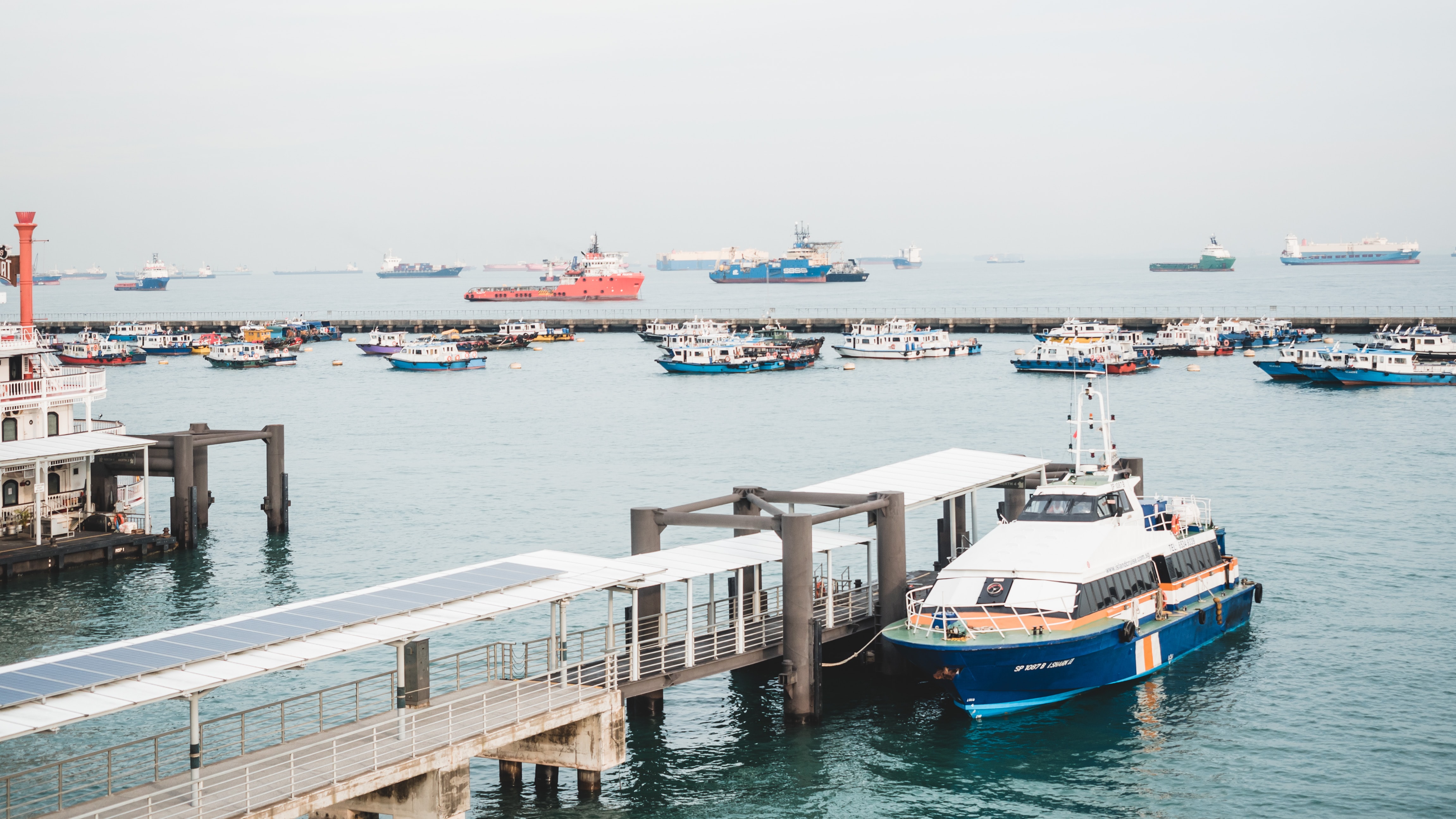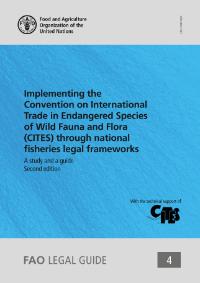![]()
Introduction from the sea (IFS) is one of the four types of trade regulated under CITES (the others are import, export, and re-export). IFS is defined in Article 1 of the Convention as transportation into a State of specimens of any species which were taken in the marine environment not under the jurisdiction of any State. Introduction from the sea of specimens of species included in Appendix I and II is regulated by the Convention, but not specimens of Appendix III-listed species (App. III only contains species that fall under the jurisdiction of the listing Party).
The Conference of the Parties has adopted additional guidance regarding the practical implementation of these provisions in Resolution Conf. 14.6 (Rev. CoP16) Introduction from the sea. With new marine species added to the Appendices at each meeting of the CoP, correct and effective implementation of the provisions on introduction from the sea becomes increasingly important for the conservation of these species.
Provisions of the Convention
- Article I, Definitions
- Article III, paragraph 5 (App. I)
- Article IV, paragraphs 6-7 (App. II)
- Article XIV Effect on domestic legislation and international conventions
Resolutions/Decisions
Documents
- Report of the Standing Committee to CoP19 (CoP19 Doc. 49)
- Report of the Secretariat to the 74th meeting of the Standing Committee (SC74 Doc. 51)
- Report of the Standing Committee to CoP18 (CoP18 Doc.52)
- Report of the Secretariat to the Standing Committee (SC70 Doc. 34)
- Report of the Secretariat to the Standing Committee (SC69 Doc. 36)
Resources
The Secretariat has collaborated with FAO to develop guidance on the linkages between CITES and fisheries legislation. The study and guidance on Implementing CITES through national fisheries frameworks is available in English, French and Spanish here.
Technical workshops
In close collaboration with the FAO and relevant regional fisheries bodies and organizations, the CITES Secretariat is organizing a series of technical workshops on the implementation of the Convention for CITES-listed marine species. The workshops’ objective is to strengthen cooperation between fisheries and CITES authorities to effectively implement CITES in the fisheries sector and to raise awareness and understanding of CITES implementation in the fisheries sector; introducing and training participants on the use of the FAO-CITES Legal Study and Guide; and identifying countries’ needs and interests in enhancing national fisheries legislation for a better implementation of CITES in the fisheries sector.
 The first workshop was held online for countries in the Pacific Islands in November 2021. See the report of the workshop here.
The first workshop was held online for countries in the Pacific Islands in November 2021. See the report of the workshop here.
 The second technical workshop was held at the end of May-beginning of June 2022 for English-speaking countries in the Caribbean. The report of the workshop is available here.
The second technical workshop was held at the end of May-beginning of June 2022 for English-speaking countries in the Caribbean. The report of the workshop is available here.
A third workshop is held in Ecuador in May 2023 for Spanish speaking Parties in Central and South America and the Caribbean. The report of the workshop is available here.
Queries
Understanding IFS in practice
In Resolution Conf. 14.6 (Rev. CoP16), Parties agreed that ’the marine environment not under the jurisdiction of any State’ means those marine areas beyond the areas subject to the sovereignty or sovereign rights of a State consistent with international law, as reflected in the United Nations Convention on the Law of the Sea. These areas are commonly referred to as ‘high seas’. Pursuant to the guidance contained in the Resolution, the transaction may be authorized with either 1. An Introduction from the sea certificate or 2. A ‘normal’ export (and import) permit. Whether it is 1 or 2 depends on the flag State of the vessel that is used for the harvest of the specimens of CITES-listed species and the State in which the specimens will be landed.
When considering which provisions to apply to authorize the introduction of specimens of CITES-listed species from the marine environment, the following issues need to be considered:
Note that it makes no difference for CITES whether the specimen is caught as by-catch or as a targeted species. The provisions of CITES apply in both situations if the specimens are transported into a State.
1) Where is it taken from? (Is it under the jurisdiction of a State or is it taken in high seas?)
Introduction from the sea only applies when specimens are taken in the high seas - in areas not under the jurisdiction of any State. Different provisions apply depending on where the vessel taking the specimens is registered and where the specimens will be landed. See under 3 below.
2) Who is taking it? (Under which flag is the vessel flying or in which State is it registered Is the vessel chartered)?
It is important for the application of the provisions of the Convention to determine the flag State of the vessel. If the flag State is the same as the State of introduction, then the provisions on IFS in the Convention applies. However, if the flag State is different from the State of introduction, the provisions on import/export will apply – see below. Resolution Conf. 14.6 (Rev. CoP16) contains special provisions for chartering. See more here.
3) In which State will it be landed? (In the State where the vessel is registered or to another State?)
A. Vessel registered in one State transports high-sea specimen into the same State (‘one-state transaction’)
When any specimen of a species included in Appendix I or II is taken in the marine environment not under the jurisdiction of any State by a vessel registered in one State and is transported into that same State, the provisions on introduction from the sea applies. These are contained in Article III, paragraph 5 for species in Appendix I, and Article IV, paragraphs 6 and 7 for species included in Appendix II. The State will issue the IFS certificate in accordance with these provisions (more here).

B. Vessel registered in one State transports high-sea specimen into a different State
In the case that a vessel registered in one State transports specimen of a species included in Appendix I or II which is taken in the marine environment not under the jurisdiction of any State into a different State, the provisions related to import/export applies. This means Article III, paragraphs 2 and 3 for species in Appendix I, or Article IV, paragraphs 2, 3 and 4 for species in Appendix II. The State in which the vessel that took the specimen is registered (flag State) is treated as the State of export and the State into which the specimen is transported is treated as the State of import. In order to distinguish such trade from other import/export transactions, Resolution Conf. 12.3 (Rev. CoP18) recommends that Parties use the source code X (“Specimens taken in the marine environment not under the jurisdiction of any State”) in their annual reporting to the CITES trade database. See the webpage on the CITES permit system for more information.

4) What is being taken? (Is it a specimen of a species listed in CITES Appendix I or II?)
In the case of a one-State transaction involving a specimen of a species included in Appendix I or II, the Management Authority of the State of introduction may authorize the introduction through an Introduction from the sea certificate. See more here.
In case of an import/export situation involving specimens of a species in Appendix I taken in the high seas, the Management Authority of the State of introduction (which is treated as the state of import) must issue an import permit in accordance with Art. III, paragraph 3, and the Management Authority of the flag State of the vessel (treated as the State of export) must issue an export permit in accordance with Art. III, paragraph 2.
In case of an import/export situation involving specimens of a species in Appendix II taken in the high seas, the Management Authority of the flag State of the vessel must issue an export permit in accordance with Art. IV, paragraph 2.
If the specimens are taken in the environment under the jurisdiction of a State or if the specimens are taken from the high seas but of a species in Appendix III, the transaction is not covered by the provisions on Introduction from the sea, but covered by CITES normal procedures; see the webpage on the CITES permit system for more information.
Non-detriment Findings
As noted above, a non-detriment finding is required for the issuance of IFS-certificates. It is up to Scientific authorities to make NDFs, but the Conference of the Parties has adopted a set of non-binding guidelines in Resolution Conf. 16.7 (Rev CoP16) Non-detriment findings. For NDFs for sharks, specific guidelines and examples have been shared by Parties.
See for instance NDFs for silky shark, smooth hammerhead shark and spinetail devil ray that have been made available by New Zealand and NDFs for scalloped hammerhead, smooth hammerhead and great hammerhead that have been made available by the United States.
These and more information on NDFs can be found on the CITES webpage on NDFs.

